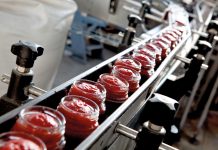 Assessment of contamination from farmed chemotherapeutics in comb honey.
Assessment of contamination from farmed chemotherapeutics in comb honey.
Misuse of chemotherapeutic agents in livestock farming may contaminate the environment with residues that, coming into contact with bees, can be introduced and accumulated in the hive. Here, they can create antibiotic resistance in the micro-organisms present in the hive. The aim of a recent study, carried out by a group of Italian researchers (Brusa et al., 2023), was to evaluate the presence of residues of some active ingredients in comb honey from apiaries (sampled between 2021 and 2022) close to cattle farms.
The sampled bee families were all assessed as strong, with the exception of seven colonies from three different apiaries, which were found to be weak during the spot visits. For the detection of antibiotic residues from the honey matrix by means of ELISA tests, 33 hives from 11 different apiaries were sampled. In particular, residues of tylosin, streptomycin, tetracyclines and sulphonamides were investigated. As a result of the tests carried out, all screening tests were negative.
In conclusion, all tested honey samples were negative, demonstrating the negligible contamination of honey from the selected sampling area. The screening methods used have proven to be effective in preventing risks to the environment from the use of pharmacologically active substances in primary production, in accordance with the knowledge and virtuous management of the “One Health” approach. However, further studies will be needed to assess the impact of chemotherapeutic agents used in animal husbandry on bee health.
Characterisation of filamentous fungi in honey.
Honey is a sweet and viscous substance consisting of a mixture of fructose, glucose, sucrose, other carbohydrates, mineral salts, and a small percentage of protein. The water content is about 17%, the pH ranges from 3.4 to 6.1, and the water activity is between 0.5 and 0.6. These properties influence the growth and survival of microbial communities, which are particularly inhibited by the low pH and high osmolarity of the substrate.
Nevertheless, some filamentous fungi (molds) can colonize this particular food, thanks to their high adaptation potential. The purpose of a recent study, carried out by a group of Italian researchers (C. Ceniti et al., 2023), was to determine the presence of molds in samples of Italian honey. The trial involved 50 unpasteurized samples collected directly from apiaries.
The survey allowed the identification – on a morpho-taxonomic basis – of the following taxa: Alternaria alternata, Aspergillus sez. Nigri, Aureobasidium pullulans var. melanogenum, Aureobasidium pullulans var. pullulans, Chaetomium spinosum, Chaetomium sp., Cladosporium cladosporioides, Coelomycetes, Eurotium chevalieri, Fusarium verticilloides, Mucor plumbeus, Penicillium restrictum, Penicillium sp., Rhizopus stolonifer, Stachybotrys chartarum e Trichoderma sp.
The identified fungal taxa have been evaluated in terms of possible primary or secondary contaminants of honey. The results obtained pointed out, in particular, the presence of Penicillium, the most representative genus in the various honeys analysed, and Aspergilli sect. Nigri, colonizers of eleven samples. In summary, the study provides a preliminary overview of the diversity of viable molds that can be isolated from honey, potentially affecting its quality and safety.
References
Brusa et al., Italian Journal of Food Safety, 12, 2023, 10-11; Ceniti et al., Italian Journal of Food Safety, 12, 2023, 51.



